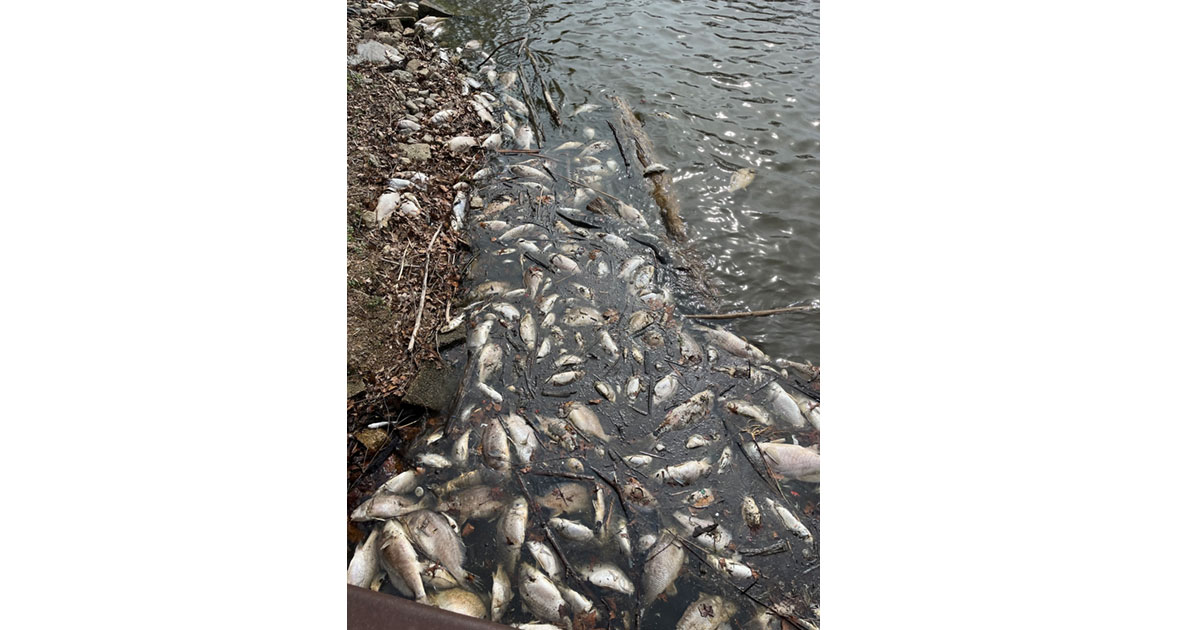- Details
MDNR Report
 Scott Smith with state record white perch
Scott Smith with state record white perch
While still-fishing with minnow bait recently in St. Clair County, Michigan, an angler from Adrian caught a state-record fish: a white perch weighing 2 pounds, 5.92 ounces and measuring 16.25 inches.
Scott Smith was fishing with a friend on Lake St. Clair, the expansive freshwater basin that connects Lake Huron and Lake Erie, the afternoon of Thursday, April 25, when he reeled in what he called a “monstrous” white perch. Their last catch of the day, the fish ended up being a record-breaker.
This fish beats the previous state-record white perch – 2 pounds, 13.57 inches – caught in 2015 by Cindy Cordo out of Bear Lake in Muskegon County.
Smith’s fish was verified by Cleyo Harris, a fisheries biologist with the Michigan Department of Natural Resources.
- Details
MDNR Report
The 2024 bear and elk hunting license application period is open through June 1. Apply online or at any license retailer. Applications are $5.
Aren’t planning to hunt this year? Increase your odds for next year and purchase your elk chance or bear preference point instead!
Take a few moments to watch the videos explaining the bear and elk license drawing process:
- Michigan elk weighted lottery system explained.
- Michigan bear draw preference point system explained.
Hunting units and season date information to assist in purchasing your applications is available at Michigan.gov/Elk and Michigan.gov/Bear. Questions? Call the DNR Wildlife Division at 517-284-9453 by June 1 for assistance with applications. Drawing results will be posted online June 24.
Hunters who want another chance at a bear or elk license can increase their odds by applying for the Pure Michigan Hunt! Applications are $5 and are available at any license agent or online at eLicense. Hunters may buy as many applications as they want. Three lucky winners will get prize packages – learn more at Michigan.gov/PMH.
- Details
MDNR Report
 Lake Macatawa Fish Die-off
Lake Macatawa Fish Die-off
An ongoing fish die-off on Lake Macatawa, near Holland in Ottawa County, stems from the virus responsible for causing viral hemorrhagic septicemia, or VHS, the Michigan DNR confirmed.
Reports of large numbers of dead and dying fish near the outlet channel of Lake Macatawa began coming in around mid-April through the DNR’s Eyes in the Field online reporting app. DNR Fisheries Division staff members were dispatched to attempt to collect specimens suitable for analysis by fish health professionals at Michigan State University’s Aquatic Animal Health Lab. Because the fish had been dead for quite a while, most were unsuitable for analysis.
- Details
MDNR Report
 Illegal Hunting
Illegal Hunting
Nicholas Patnode, 19, and Zander Garrett, 20, were arraigned Monday in Kalkaska County District Court in Kalkaska for multiple wildlife violations that took place throughout Kalkaska County during October-November 2022.
Michigan Department of Natural Resources conservation officers began the complex investigation in 2022 after receiving a tip through the DNR Report All Poaching hotline.
Conservation officers discovered a group of individuals who had committed multiple wildlife crimes, including several counts of shooting deer from a motor vehicle, game-tagging violations and animal cruelty charges.
The Kalkaska men are believed to have illegally killed at least six deer, including a 9-point buck shot from the window of a truck. They are also accused of inhumanely killing a porcupine.
“When there’s this many violations, including torturing animals, education only goes so far. These crimes need to be addressed,” said Jason Haines, chief of the DNR’s Law Enforcement Division. “Prosecution of these acts will hopefully deter not only these individuals but others from committing similar crimes in the future.”
Haines praised the work of his investigators.
“Our officers conducted a very thorough investigation to piece together many pieces of evidence from throughout the county,” he said.
Patnode’s 11 charges, include:
- Two counts of killing, torturing animals, a third-degree felony punishable by up to four years in jail and/or $5,000 in fines.
- Six counts of wildlife conservation violation – general violations. Each is a misdemeanor punishable of up to 90 days in jail per count and/or $500 each.
- One count of hunting and fishing license violation – using another’s license, a misdemeanor that carries a punishment of up to 90 days in jail and/or up to $250 in fines.
- One count of wildlife conservation violation – taking game from a vehicle; a misdemeanor punishable by up to 90 days in jail and/or up to $500 in fines.
- One count of wildlife conservation violation – possessing a bow or crossbow in a vehicle operated on public land or roads. The offense is a misdemeanor carrying a sentence of up to 90 days in jail and/or up to $500 in fines.
- Details
MDNR Report
 Egg Collection
Egg Collection
It’s simple math really: Zero eggs equals zero fish for future stocking programs.
So, the spring walleye and steelhead egg collections by the Michigan DNR are critical components of the strategy for maintaining world-class fishing opportunities in the Great Lakes State.
Walleye fishing (and the fish fries that follow) is a quintessential part of Midwest culture. Whereas this species does reproduce naturally in some large rivers and northern Michigan lakes, many of the popular walleye fisheries in the state are dependent on stocking. The DNR uses two donor populations to supply the eggs for statewide stocking programs.
Lower Peninsula – Muskegon River
The DNR’s 2024 walleye egg collection efforts began on the Muskegon River on March 26. Personnel from the Southern Lake Michigan and Central Lake Michigan management units used an electrofishing boat to capture adult walleye downstream of Croton Dam in Newaygo County.
Walleye were transported to holding pens at the Pine Street boating access site, where a fish-processing assembly line was created. One Wolf Lake State Fish Hatchery employee stripped eggs from a female walleye into a bowl. Another person collected milt from a male walleye, then added the milt to the bowl to fertilize the eggs. Both male and female walleye were released back into the river after these steps.
A third hatchery worker added the eggs to a bucket where they were mixed with a type of fine clay that coated the eggs and prevented them from clumping together. Next, the eggs were poured into a mesh bag in the river to water-harden for about an hour. This step is crucial as fresh eggs are very fragile.


